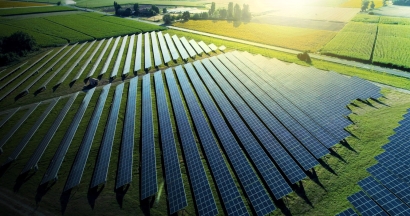
The latest issue of EIA's "Electric Power Monthly" report (with data through September 30, 2022) reveals that in the first nine months of 2022, renewable energy sources (including small-scale solar systems) [1] increased their electrical output by 15.44% compared to the same period a year earlier. Year-to-date, renewables have provided 22.66% of total U.S. electrical generation compared to 20.33% a year earlier.
For the nine-month period, electrical generation by wind increased by 18.64% and provided almost a tenth (9.75%) of total electrical generation. Meanwhile, solar sources grew by 25.68% and provided 5.01% of the nation's electrical output. In addition, generation by hydropower increased 7.98% and accounted for 6.29% of the total. Geothermal also grew by6.95% while electrical generation attributed to the combination of wood and other biomass dropped by 1.12%.
Taken together, during the first three-quarters of 2022, renewable energy sources comfortably out-produced both coal and nuclear power by 15.52% and 28.25% respectively. In fact, over the past half-decade, the mix of renewables has moved from fourth into second place among electrical generating sources while relegating coal and nuclear to third and fourth place.
However, EIA's data also suggest that renewable energy's strong growth this year may slow down during the last third of 2022.
In September alone, electrical generation by solar grew by 21.02% and geothermal increased by 5.1% compared to September 2021. On the other hand, generation by wind dropped by 6.81% as did that by hydropower (down 1.14%) and biomass/wood (down 4.57%). Taken together, electrical output by renewables was just 1.45% higher than a year ago and because electrical generation by all sources increased, renewables' share in September was nearly unchanged from a year earlier (19.18% vs. 19.14%).
"For some time now, EIA has been forecasting renewables to provide 22% of U.S. electrical generation in 2022 - up from 20% a year earlier [2]," noted the SUN DAY Campaign's executive director Ken Bossong. "While they presently are ahead of that level, a slowdown in generation by wind and hydropower during the last quarter of this year could result in renewables falling short of that mark while still exceeding their 2021 record output."
[1] Unless otherwise indicated, the electricity figures cited above include EIA's "estimated small-scale solar photovoltaic" (e.g., rooftop solar systems) which accounts for 28.8% of total solar output and over six percent (6.4%) of total net electrical generation by renewable energy sources.
[2] See, for example, U.S. Energy Information Administration, "EIA expects renewables to account for 22% of U.S. electricity generation in 2022"

